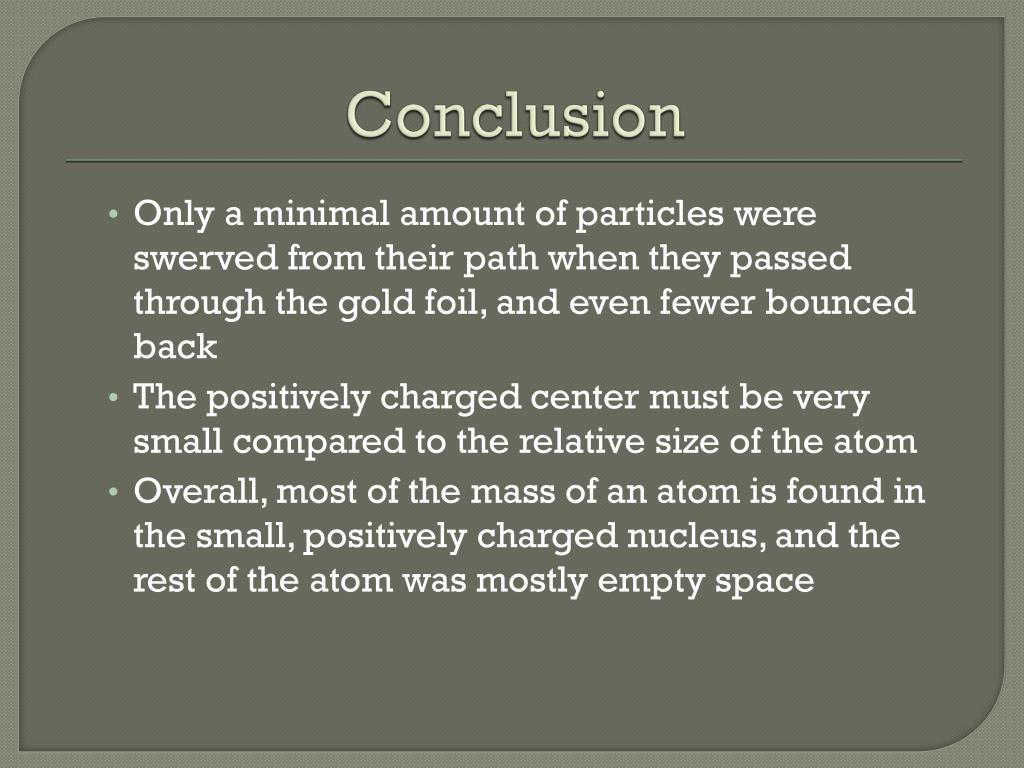


Therefore, most of the α-particles went through the gold foil without deflecting from their path. Most of the space inside the atom is empty. Most of this planetary atom was open space and offered no resistance to the passage of the alpha particles.What are the conclusions of Rutherford’s? The electrostatic force of attraction between electrons and nucleus was likened to the gravitational force of attraction between the revolving planets and the Sun. The negative electrons that balanced electrically the positive nuclear charge were regarded as traveling in circular orbits about the nucleus. (Rutherford famously said later, “It was almost as incredible as if you fired a 15-inch shell at a piece of tissue paper and it came back and hit you.”) Only a positively charged and relatively heavy target particle, such as the proposed nucleus, could account for such strong repulsion.

Still other alpha particles were scattered at large angles, while a very few even bounced back toward the source. Some alpha particles were deflected slightly, suggesting interactions with other positively charged particles within the atom. Most alpha particles passed straight through the gold foil, which implied that atoms are mostly composed of open space. What is the basic unit of work? What does the pitch of a sound depend on? Test your physics mettle with this quiz. The screen itself was movable, allowing Rutherford and his associates to determine whether or not any alpha particles were being deflected by the gold foil. As each alpha particle struck the fluorescent screen, it produced a burst of light called a scintillation, which was visible through a viewing microscope attached to the back of the screen. A thin section of gold foil was placed in front of the slit, and a screen coated with zinc sulfide to render it fluorescent served as a counter to detect alpha particles. The radiation was focused into a narrow beam after passing through a slit in a lead screen. A radioactive source emitting alpha particles (i.e., positively charged particles, identical to the helium atom nucleus and 7,000 times more massive than electrons) was enclosed within a protective lead shield.
#RUTHERFORD EXPERIMENT CONCLUSION SERIES#
The nucleus was postulated as small and dense to account for the scattering of alpha particles from thin gold foil, as observed in a series of experiments performed by undergraduate Ernest Marsden under the direction of Rutherford and German physicist Hans Geiger in 1909. SpaceNext50 Britannica presents SpaceNext50, From the race to the Moon to space stewardship, we explore a wide range of subjects that feed our curiosity about space!.Learn about the major environmental problems facing our planet and what can be done about them! Saving Earth Britannica Presents Earth’s To-Do List for the 21st Century.Britannica Beyond We’ve created a new place where questions are at the center of learning.100 Women Britannica celebrates the centennial of the Nineteenth Amendment, highlighting suffragists and history-making politicians.
#RUTHERFORD EXPERIMENT CONCLUSION HOW TO#
COVID-19 Portal While this global health crisis continues to evolve, it can be useful to look to past pandemics to better understand how to respond today.Student Portal Britannica is the ultimate student resource for key school subjects like history, government, literature, and more.



 0 kommentar(er)
0 kommentar(er)
